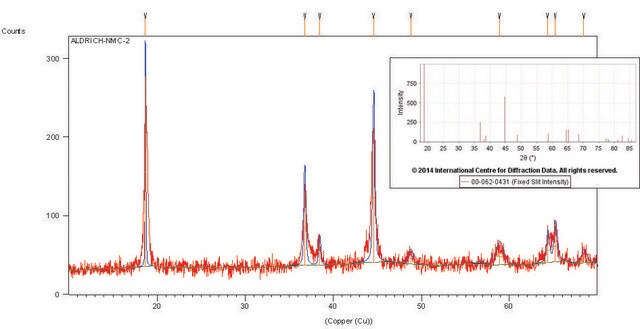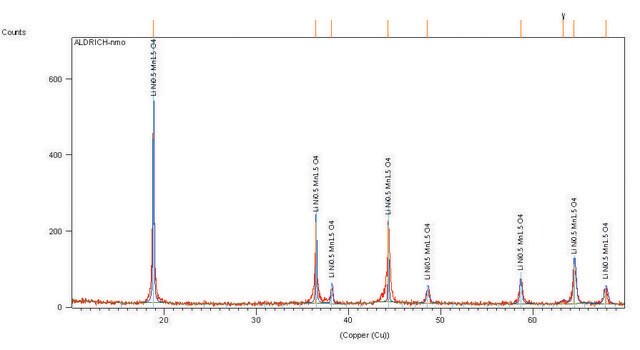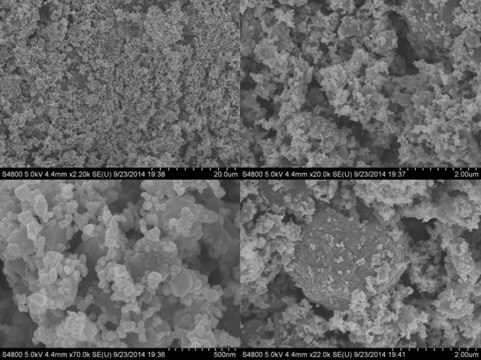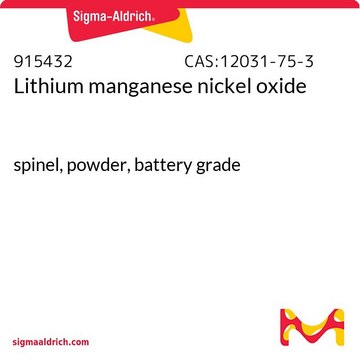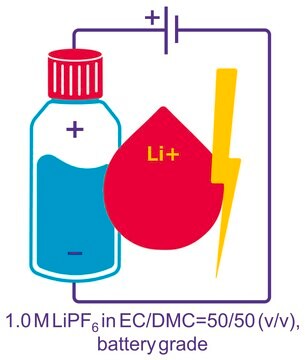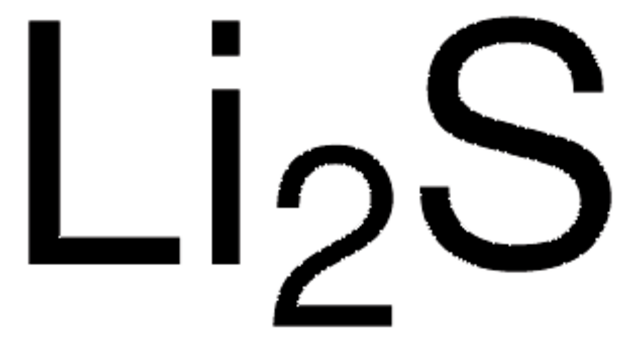765163
Lithium nickel manganese cobalt oxide
electrode sheet, aluminum substrate, size 5 in. × 10 in.
Synonym(e):
NMC
About This Item
Empfohlene Produkte
Qualität
battery grade
Qualitätsniveau
Beschreibung
Nominal Voltage: 3.5 V, Li/Li+
Zusammensetzung
loading, ≥80%
Grünere Alternativprodukt-Eigenschaften
Design for Energy Efficiency
Learn more about the Principles of Green Chemistry.
sustainability
Greener Alternative Product
Kennzeichnungsgrad
≥80% loading
Größe
5 in. × 10 in.
Dicke
16 μm
Partikelgröße
8-12 μm (typical)
Kapazität
150 mAh/g(minimum)
mp (Schmelzpunkt)
>1000 °C
Anwendung(en)
battery manufacturing
Grünere Alternativprodukt-Kategorie
Allgemeine Beschreibung
Anwendung
Sonstige Hinweise
Operating Conditions:
- Recommended maximum charge voltage: 4.4 V vs Li/Li+
- Recommended maximum charge current: 1C
- Recommended cut-off voltage for discharge: 2.7 V vs Li/Li+
- Recommended maximum discharge current: 1 C
- Recommended charge method: constant current - constant voltage
Signalwort
Warning
H-Sätze
Gefahreneinstufungen
Carc. 2 - Skin Sens. 1
Lagerklassenschlüssel
13 - Non Combustible Solids
WGK
WGK 3
Flammpunkt (°F)
Not applicable
Flammpunkt (°C)
Not applicable
Hier finden Sie alle aktuellen Versionen:
Analysenzertifikate (COA)
Die passende Version wird nicht angezeigt?
Wenn Sie eine bestimmte Version benötigen, können Sie anhand der Lot- oder Chargennummer nach einem spezifischen Zertifikat suchen.
Besitzen Sie dieses Produkt bereits?
In der Dokumentenbibliothek finden Sie die Dokumentation zu den Produkten, die Sie kürzlich erworben haben.
Kunden haben sich ebenfalls angesehen
Artikel
Professor Qiao’s laboratory lays out recent advances in conversion type lithium metal fluoride batteries. This review explores key concepts in developing electrochemically stable microstructures for wide Li-ion insertion channels.
Electrode Materials for Lithium Ion Batteries
Lithium-ion batteries (LIBs) have been widely adopted as the most promising portable energy source in electronic devices because of their high working voltage, high energy density, and good cyclic performance.
Li-ion batteries are currently the focus of numerous research efforts with applications designed to reduce carbon-based emissions and improve energy storage capabilities.
Unser Team von Wissenschaftlern verfügt über Erfahrung in allen Forschungsbereichen einschließlich Life Science, Materialwissenschaften, chemischer Synthese, Chromatographie, Analytik und vielen mehr..
Setzen Sie sich mit dem technischen Dienst in Verbindung.